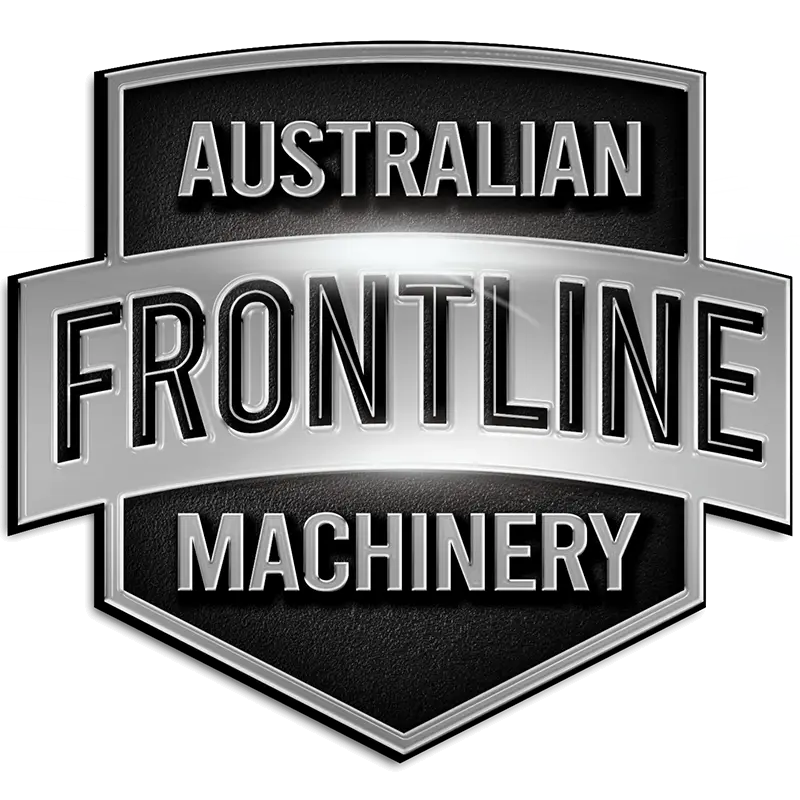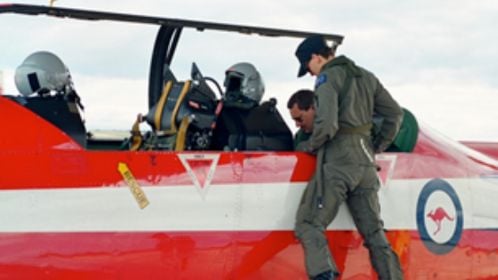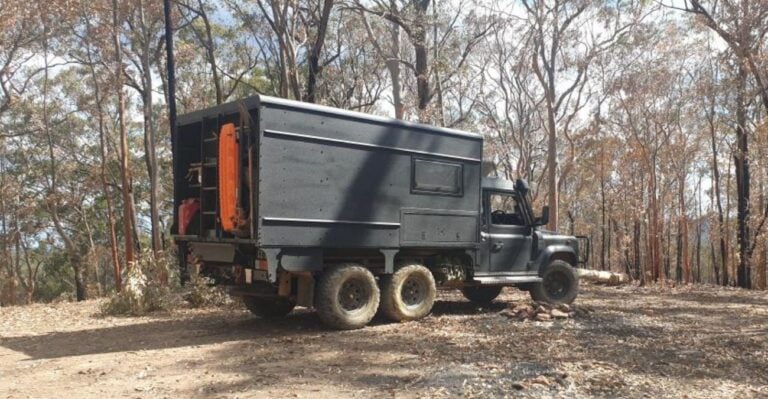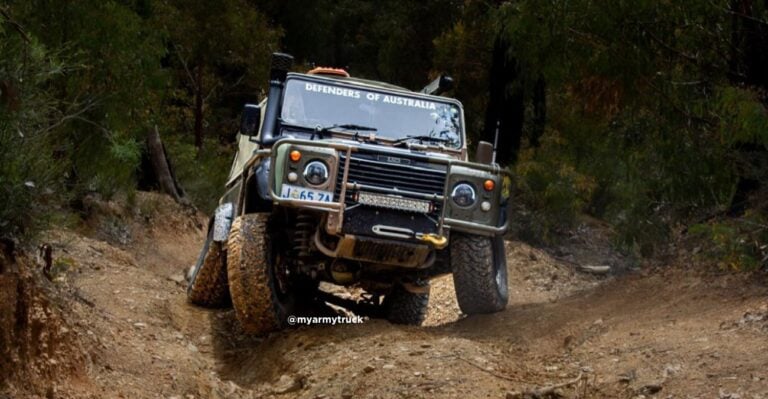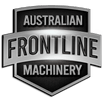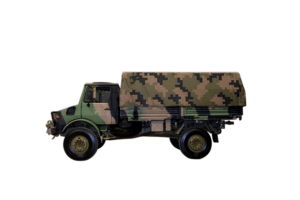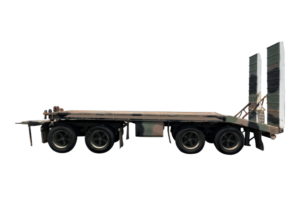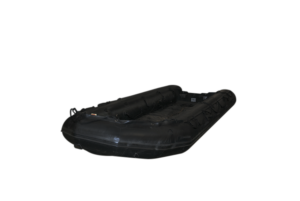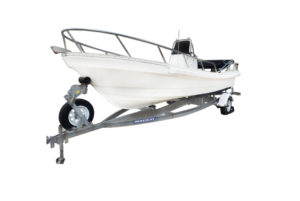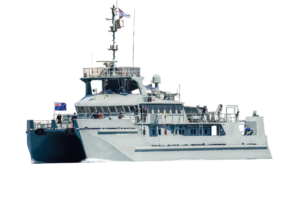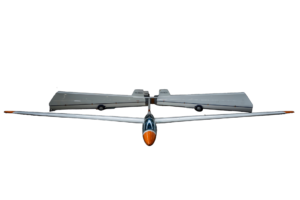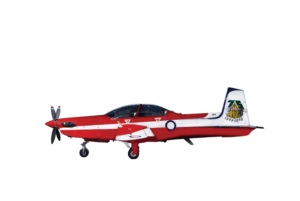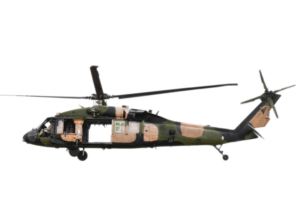Roulettes (the game) can often make one dizzy, and so was the chosen name that the Royal Australian Air Force (RAAF) graced its aerobatic display team. The Roulettes were formed in 1970 to celebrate the 50th anniversary of RAAF; the Roulettes initially trained to utilise five Aermacchi MB-326 jet trainers until the RAAF acquired their Pilatus PC-9/A fleet.
The Pilatus PC-9/A’s celebrated their 30 years of service and over 500,000 flight hours in show-stopping aerobatic displays at the 2019 Australian International Airshow at Avalon, Victoria. From there, the Roulettes PC-9/As were flown to the RAAF Base Pearce in Perth to serve out the remainder of their training time with the RAAF before being publicly auctioned.
DESIGNED TO OUTLAST
The fleet of Pilatus PC-9/A’s procured for RAAF pilot training was initially scheduled for withdrawal from service earlier than 2019, however a testament to the turboprop robust design and capability, their service life was extended after a detailed review by The Australian Defence Force (ADF).
“The responsiveness and excellent control damping allow precise control of the aircraft with little control force and the superb visibility provides for easy orientation throughout the manoeuvre. There is no excuse for poor aerobatic flying in the PC-9.” Carlo Kopp, Australian Aviation
AEROBATIC FORMATIONS
Aerobatics is flying spectacular manoeuvres performed by one or a cluster of jets or gliders. While exhibitions of aerobatics are often performed for entertainment, the training is highly deliberate and purposeful for RAAF pilots. Aerobatic training enhances a pilot’s ability to recover from unusual flight conditions.
Many well-known aerobatic formations are designed to mimic tactical manoeuvres used in varying contexts of airborne combat. These formations are notable and purposeful and form an extensive part of RAAF combat training for pilots.
THUNDERBIRD
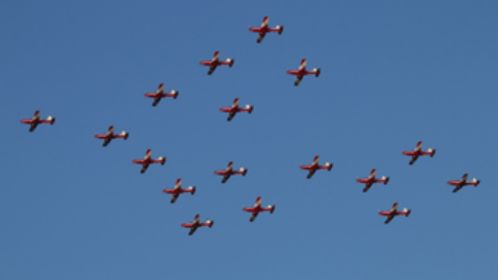
Figure 1- 17 Pilatus PC-9/A aircraft of 2 Flying Training School (2FTS), RAAF, based at Pearce, WA, in Thunderbird formation over the northern suburbs of Perth (AviationWA)
The Thunderbird is a well-known formation that is often taught first. Traditionally the Thunderbird is performed with a fleet of 16 jets following a common flight path at close altitude in a cluster resembling a large aircraft. The formation can be scaled down and performed with as few as six or nine vessels. Thunderbird is often taught as a training formation for student pilots while they learn to fly in a cluster at proximity with other jets. RAAF Roulettes perform the classic manoeuvre often as part of air shows, and as a ‘salute’ during ADF graduation ceremonies. The Thunderbird formation in this image was performed as a salute to the ten RAAF and two Royal Australia Navy (RAN) students of number 235 Pilots Course who graduated as military aviators in 2015.
CORKSCREW
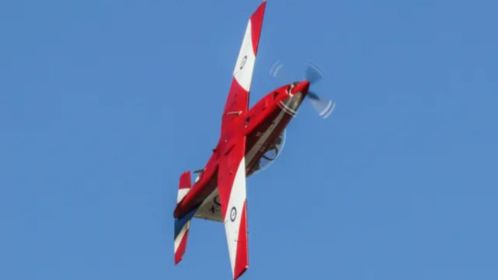
Formation flying is not a simple feat. Two or more aircraft are piloted by a team of highly-skilled operators that execute synchronised, disciplined and predetermined manoeuvres at speeds of nearly 600kms/hour. Basic manoeuvres are entered at approximately 370kmph combination manoeuvres require a slightly higher entry speed with a maximum speed estimated at 556kmph.
Traditionally, military planes fly in formations during combat missions to gain tactical advantage by being able to strike simultaneously, join in mutual defence if attacked, and maximise concentration of firepower. RAAF pilots train in aerobatics to ensure that they’re intensely skilled in the highly consuming art of flying in formation, in the instance that these skills are required in combat.
BARREL ROLL
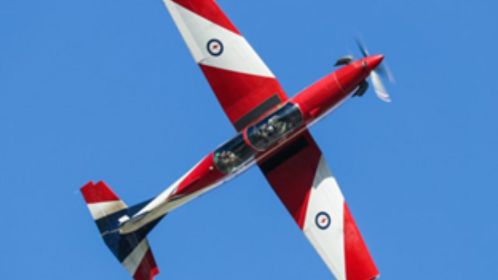
A Barrel Roll is another evasive manoeuvre adapted to aerobatics for training and implementation of combat tactics in the airspace. During a barrel roll, the Pilatus PC-9/A makes a complete rotation on both its lateral and longitudinal axes, causing it to travel in a helical path, with the nose of the aircraft pointed along the original flight path. An aircraft executing this manoeuvre looks as though it were flying with its wheels running around the inside of an imaginary barrel, where the movement draws its name from. During the final aerobatic display performed by the Roulettes to commemorate the retirement of Pilatus PC-9/A from the RAAF service fleet, the pilots performed a complex corkscrew barrel roll manoeuvre with one inverted aircraft
BARREL ROLL
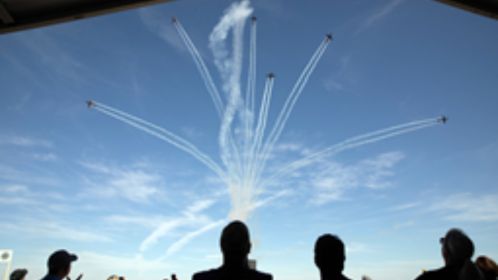
A-Bomb Burst is a visually impressive manoeuvre during which clustered aircraft disperse in all directions either while coming down during the second half of a loop, going up after a dive, or pulling up after a loop – there are many choreographed variations performed by aerobatic teams around the world. Following the dispersal, jets then return to cluster in striking arches. The Bomb Burst manoeuvre is described as powerful and moving – so much so that an enormous interpretation of it is mounted near the Pentagon in the USA, as a memorial to those that served in the United States Air Force.
The Roulettes performed the Bomb Burst often as part of their aerobatic display. See the Roulettes performing a Bomb Burst using a Pilatus PC-9/A glider
